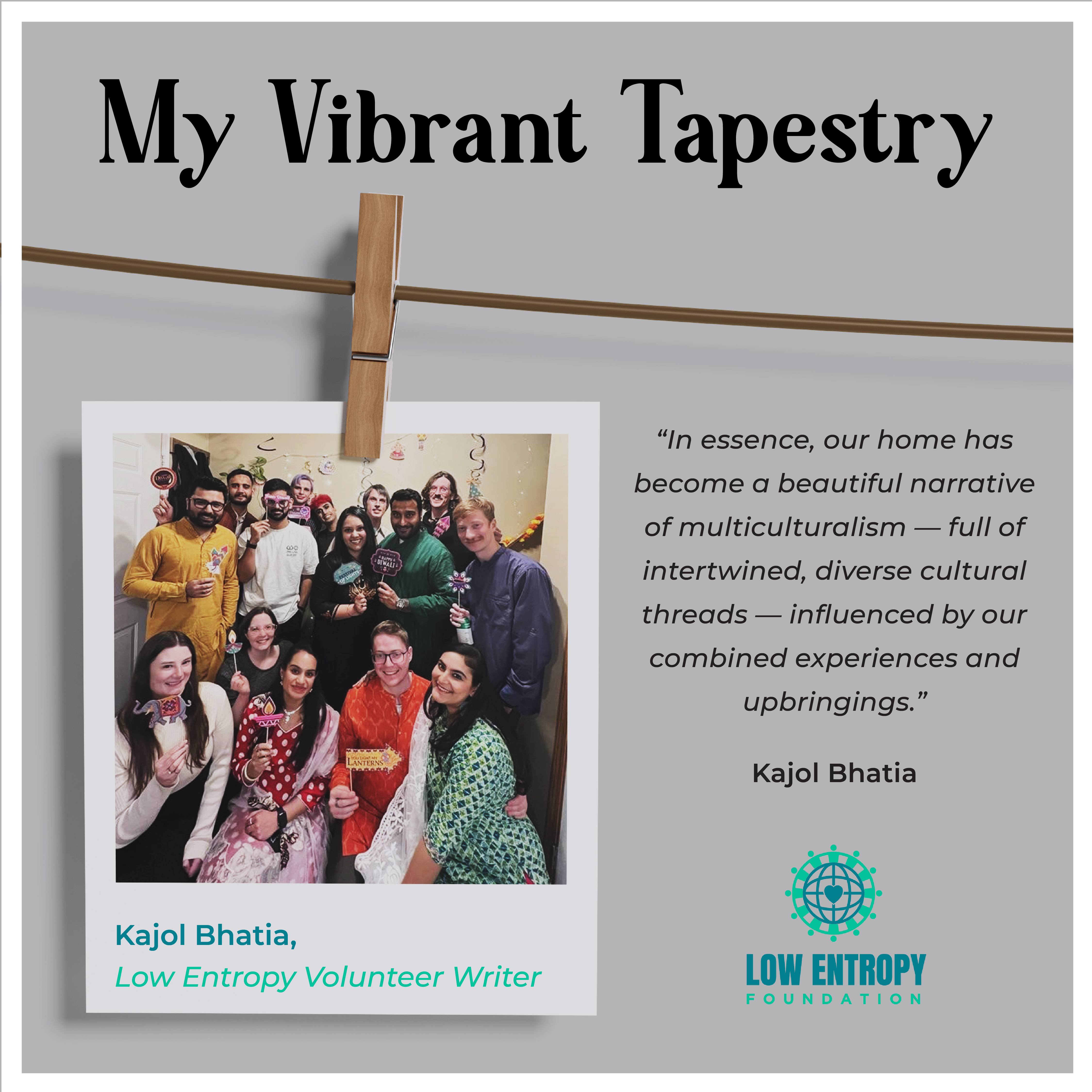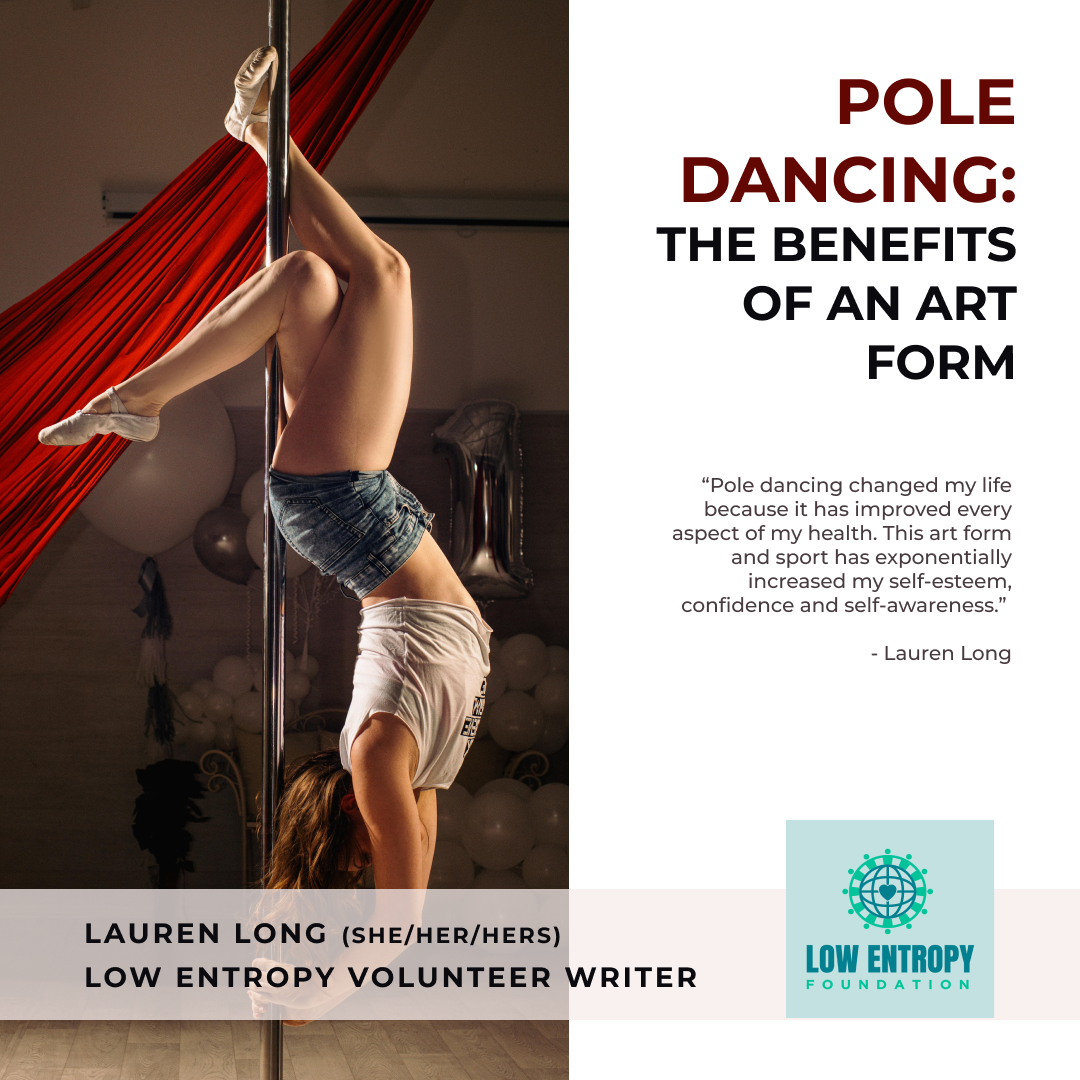Kajol Bhatia, Low Entropy Volunteer Writer
Traditions, food and togetherness are the words I associate with celebrations—big and small. I’ve often found myself struggling with the intricacies of my own cultural identity, especially growing up as the daughter of expatriates. Nevertheless, the grounding values and sentiments behind these events that were rooted in the fusion of cultural influences have become an integral part of who I am today.
As a young girl, I discovered the profound joy of dressing up and celebrating with loved ones during these special occasions. While it was exciting to grow up in a multicultural city like Dubai, as an adult, I’ve now recognized the struggles my parents had to build a community and a space that felt like home to a family while living in a foreign country.
Embracing diversity, I’ve excitedly celebrated Christmas with my brother, born on Christmas Day; relished the values associated with Ramadan, living in an Islamic country; and eagerly waited for Eid to enjoy a good plate of biryani from my Muslim neighbours. In the vibrant tapestry of my multicultural life, this melding pot of traditions and celebrations has become a cherished aspect of my journey.
Reflecting on my childhood, the memories of colourful Rangoli outside the door and the aroma of traditional food evoke a sense of nostalgia. Despite the challenges of never-ending cleaning, cooking and decorating, it’s the joy of hosting, the love of sharing, and having friends and family close that makes these moments truly special.
Having lived in three different countries, I’ve been provided with the opportunity to adapt my celebrations while holding onto the core values that define my cultural identity. As I continue to celebrate various events in diverse settings, I realize that these moments of togetherness hold the power to unite us all, fostering appreciation and respect for the richness of each culture that makes up our global society. In today’s interconnected world, it’s crucial to appreciate and understand these diverse celebrations that take place in our communities.
Sharing my life with a Caucasian partner has provided a unique opportunity to blend the richness of my Indian heritage with the festivities of the Western world. My partner, who has lived in Canada and the US, brings their own set of lived experiences and traditions into our home. For instance, Diwali, the festival of lights, has always had a special significance in my family and earlier this year, my partner and I hosted our first annual Diwali celebration in our home together.
From sharing traditional Indian food to incorporating elements of Western parties into our Diwali celebrations, the gathering symbolized the coming together of two worlds in a harmonious celebration of love and shared values. Our approach to celebrations has not been about replacing one set of traditions with another, but rather about embracing the amalgamation of Indian and Western customs. Moreover, starting our annual celebrations has enabled us to introduce our friends and extended family to the richness of each other’s cultures.
In essence, our home has become a beautiful narrative of multiculturalism—full of intertwined, diverse cultural threads—influenced by our combined experiences and upbringings. This journey has not only strengthened our relationship, but has also allowed us to highlight the success of immigration and Canada’s multiculturalism policy.
On Oct. 8, 1971, Prime Minister Pierre Elliott Trudeau announced multiculturalism as an official government policy—the first of its kind in the world—to recognize the contribution of cultural diversity and multicultural citizenship to the Canadian social fabric.
Fast forward to the present day, and the real impact of this policy is beautifully reflected in households like ours. These mixed families, founded on principles of love and respect, embody the very essence of diversity. In these homes, cultural traditions are not just preserved, but also shared and embraced.
It’s witnessed in the shared celebrations, traditions and languages that become an integral part of family dynamics. The impact is seen in children who grow up with an understanding and appreciation for multiple cultures, creating generations that value diversity as a strength rather than a difference.
Ultimately, the real success of Canada’s multiculturalism policy lies in the ability of individuals from different cultural backgrounds to come together, form families and build homes that serve as living testaments of a policy that has not only shaped the nation, but has also created a legacy that continues to thrive in the hearts and homes of Canadians.
Reflecting on what celebrations mean to me, a third-culture kid, I’ve come to enjoy the charming chaos of festivities and traditions of different nationalities that make my cultural identity a celebration in itself. It’s a privilege to have an understanding of our world and live in awe and appreciation of our differences.
—
Leave your thoughts for Kajol in the comments below. You can also follow us on Facebook, Instagram, TikTok, Twitter and YouTube to stay up-to-date with Low Entropy news!









